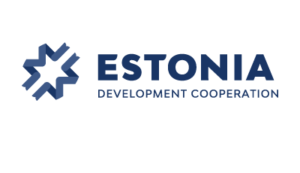Waste stories from Kenya – first impressions
Habari! As part of the Estonian development cooperation work, I’m spending this February in Nairobi, Kenya to exchange experiences with UN-Habitat, the UN body working for better quality of life in all urbanized areas, and specifically with their waste team. This is small summary of my first week’s impressions.
Tackling plastic waste pollution
In 2017, Kenya put a law in place making plastic bags illegal. It was a bold and pioneering move and apparently there is a lot less plastic waste on the streets and in the environment. But the reality also is that it has not had the needed impact on plastic pollution and waste of resources in general. There are no plastic bags seen at markets or supermarkets, however, they have simply been replaced by paper bags, thin synthetic fabric bags or plastic net bags. Most of them are single use and still made of plastic. So one problematic item has simply been replaced by another. It is a good reminder also to the EU, whose member states are currently still working on the implementation of Single Use Plastics Directive: replacing single use plastic items with single use items from other materials is not the solution.
At the same time single use plastic items are forbidden at protected areas. At the gate of Nairobi’s Karura forest you can see a sign and table of confiscated plastic bottles. The forest indeed looks very green, apart from some face masks here and there, which have become probably our most common single use waste item since the start of COVID-19.
More background on Kenya’s action on plastic pollution can be read here and here.
Local solutions in Nairobi
My first experience with waste in Nairobi was rather painful. After being so used to separating my waste into six sections (organics, packages, paper, glass, deposit bottles, mixed) at home I was now faced with only one bin. Having to put a glass bottle and organic leftovers into the same bin did actually hurt. But this could also be taken as a good sign for human behaviour change: once we adopt a new habit, going back will start to feel really wrong.
So this meant I started asking my new colleagues what are the possibilities for recycling and reuse in Nairobi (see the Keep It Clean Plan Roadmap for individuals :). What I found out is that apparently there is even a small scale deposit return system being practiced in some parts of the city. Several bars and restaurants and some supermarkets take back glass bottles, to be refilled by smaller beer breweries and soft drink producers. The system is still very local and largely a part of “the inside info”, but it shows promise for more opportunities in that direction. Currently one of the main issues with glass as material is that there are no proper glass recyclers within Kenya, so the market for glass is non-existent.
Basic separate collection and recycling works for some parts of the city. Mostly this means collecting separately organic and non-organic waste. Public collection points for plastic bottles can be seen here and there in the city. The recycling rate in Nairobi is estimated around 15% (as at 2019).
Something that could be working better in Kenya than in many European countries is repair. Since many people cannot afford to buy new things when something breaks, local repair solutions are quite common: bikes, clothes, shoes, some electronics, etc. As labour is also cheaper than in Europe, repair is more affordable and even cheaper than buying new things.
Ending my post with a disclaimer: all these impressions and remarks are based on shallow one week observations and chats. I’m sure there is much more detail in all these topics in Nairobi and Kenya. So stay tuned for my next posts!
This post is the first in the series of impressions from Kadri Kalle on her mission supported by the Development Cooperation of the Ministry of Foreign Affairs of Estonia

